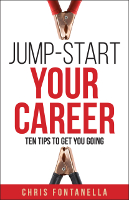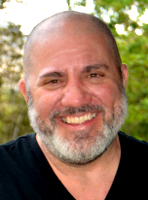
Image by Gerd Altmann
It’s an opening scene that deserves more attention. Some miss it because it happens so quickly. I am referring to the start of Pretty Woman. The character, Happy Man, is walking across the street saying,
“Welcome to Hollywood! What’s your dream? Everybody comes here; this is Hollywood, land of dreams. Some dreams come true, some don’t; but keep on dreamin’ – this is Hollywood. Always time to dream, so keep on dreamin’.”
The scene encapsulates the film’s main point: Dreams can…and do…come true; there are no limits to what we can achieve.
Dreamers Willing to Cross the Atlantic
In the 1830s, a crop of hopeful and aspiring Americans with outsized dreams in their hearts set out for Paris. The city---at that time more advanced in medicine, engineering, music, art, theater, and other aspects of life---attracted a spectrum of people with dreams as varied as the individuals themselves; people like Oliver Wendell Holmes (physician and poet), James Fenimore Cooper (author of The Last of the Mohicans), Charles Sumner (U.S. Senator, who would lead anti-slavery campaigns), Samuel F.B. Morse (painter, more well-known for his single-wire telegraph system known as Morse Code), Emma Willard (founder of a female seminary), and Augustus Saint-Gaudens (sculptor who became famous for his monuments of the American Civil War).
All went to Paris to pursue a cherished aspiration that pulsed in their hearts. They were people who “spoke of [Paris] then as the dream of a lifetime,” says David McCullough in The Greater American Journey: Americans in Paris.
Where Does Your Dream Lie?
Can you answer Happy Man’s question, “What’s your dream?” Is there something you’d be willing to cross the Atlantic for? More specifically, what’s your dream when it comes to your career? Or put another way, what do you want to achieve in terms of your career?
These are questions worth grappling with, because whether you know it or not, your job -- that place where you spend many hours of your life -- is an opportunity at “the dream of a lifetime.”
Another equally important question to answer, the question that allows you to answer the questions above, is how do you acquire a dream like that? How do you find a vision around which you can orient your whole life, something uniquely yours that drives you to brave dangerous waters because another shoreline beckons you?
The dream-filled Americans who crossed the Atlantic had no clue what life outside their country was like or how different it would be. Most had never even boarded a sea going vessel before. Yet despite any real or imagined fears, their dreams carried them beyond the uncertainties that crossing the sea presented.
That’s the kind of dream you should be looking for. Because career heroes know it’s far better to face tumultuous waters than to stand on secure shores.
Mystical Thinking and the Path Forward
I get strange looks from people when I tell them mysticism helps with dreaming. That’s because they define mysticism in religious terms that conjure images of monks, nuns, and others who seek a spiritual connection with the divine through contemplation and self-surrender. To them, mysticism is chanting, rubbing prayer beads, and kneeling on prayer mats.
Yet, after researching the words’ etymology, I discovered mysticism simply means to close one’s eyes or lips. It’s the practice of removing visual distractions and shutting your mouth so you can “see” and “hear” what cannot be seen or heard with your natural eyes and ears. Mystics are people who make time to contemplate, meditate, and reflect, in order to tap into or connect with something beyond their senses.
When I was a kid in elementary school, you needed a hall pass to go to the restroom. If you roamed the halls without one, an adult---typically someone who looked like a warden at Shawshank State Prison---would escort you to the principal’s office.
Mysticism, in the sense noted above, is a “hall pass” that removes the constraints of those who appear to be in charge and grants your mind freedom to wander. It allows your thoughts to roam other dimensions and imagine big things for your future. It better postures you to envision the overarching theme of your life, that unique vision and dream all your own. Mystical thinking fosters an environment whereby big dreams and ambitious plans for your career can enter your heart.
How To Cultivate Your Inner Mystic
After thirty years of finding jobs for people, I have concluded no better way exists to hear a dream-filled message that can revolutionize your career than to make time for moments of mysticism. In a word, mysticism---time spent contemplating, meditating, and reflecting---matters.
Here are two suggestions to cultivate your inner mystic:
1. Enter a walled garden: Recognizing a common theme among myths of different countries and peoples, mythologists stress the importance of isolating yourself in a walled garden, a place your mind can wander and you can be introspective.
“However you find the time,” says Bob Iger in his book, The Ride of a Lifetime, “it is vital to create space in each day to let your thoughts wander…to turn things over in your mind in a less pressured, more creative way than is possible once the daily triage [of work] kicks in.” Entering your walled garden---any place you create for introspective moments---allows you to do just that.
2. Learn to do nothing: Maybe you’re familiar with the scene in Forgetting Sarah Marshall where Chuck, played by Paul Rudd, attempts to teach Peter Bretter, played by Jason Segel, how to surf. Chuck, who calls himself Kunu to sound more Hawaiian, takes a Zen-like approach with his student. When it comes to surfing, Kunu says, “Don’t do anything. Don’t try to surf. Don’t do it. The less you do, the more you do.”
Of course, when Peter does absolutely nothing, Kunu tells him he must do more than that. By the end of the lesson, it’s clear Peter has not found the balance of doing more by doing less.
Mystics who surf, those who catch meditative waves, understand mysticism doesn’t require anything except sitting still. When you do that, you’ll catch a dream.
Copyright ©2023. All Rights Reserved.
Book by this Author:
Jump-Start Your Career: Ten Tips to Get You Going
by Chris Fontanella. Jump-Start Your Career is not a book of tips on resumé writing and interviewing, or steps you should take to ascend the corporate ladder. It doesn't tell you how to explain the gaps in your resumé, how to negotiate your salary, or when to ask for a raise. You won't learn how to exit a company without burning a bridge. In sum, it's not a how-to manual.
Jump-Start Your Career is not a book of tips on resumé writing and interviewing, or steps you should take to ascend the corporate ladder. It doesn't tell you how to explain the gaps in your resumé, how to negotiate your salary, or when to ask for a raise. You won't learn how to exit a company without burning a bridge. In sum, it's not a how-to manual.
Instead this is a guidebook to help shape who you are as a person, which in turn can shape your career.
Click here for more info and/or to order this paperback book. Also available as a Kindle edition.
About the Author
 Chris Fontanella is the founder of Encore Professionals Group, a professional services firm specializing in the identification and placement of accounting and finance candidates in temporary and full-time positions. He previously served as Division Director for Robert Half International and Client Service Director for Resources Global Professionals. Prior to entering the staffing industry,
Chris Fontanella is the founder of Encore Professionals Group, a professional services firm specializing in the identification and placement of accounting and finance candidates in temporary and full-time positions. He previously served as Division Director for Robert Half International and Client Service Director for Resources Global Professionals. Prior to entering the staffing industry,
Chris spent years studying theology and preparing for ministry, having received his bachelor of arts degree in New Testament Studies from Oral Roberts University, and his master of arts degree in Theological Studies from Fuller Theological Seminary. He is the author of Jump Start Your Career: Ten Tips to Get You Going, and Tune-Up Your Career: Tips & Cautions for Peak Performance in the Workplace.
Learn more at chrisfontanella.com.
More Books by the author.























